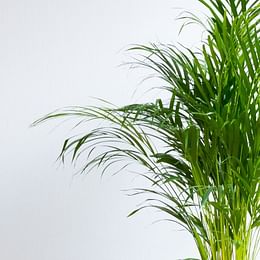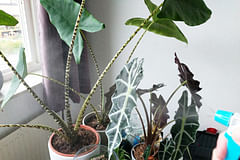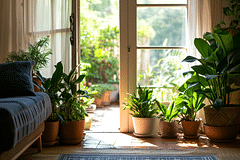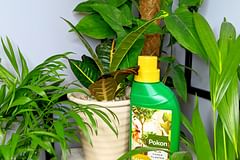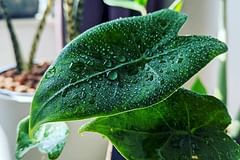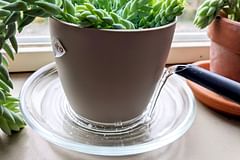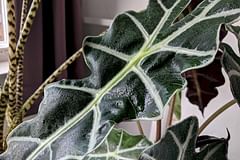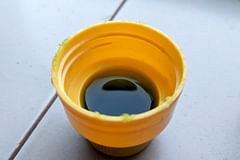Houseplants 101: How to get a green thumb
In this plant care guide, I'll teach you all the basics about taking care of plants. We'll look at which plants are great for beginners and will allow you to make mistakes without dying right away.
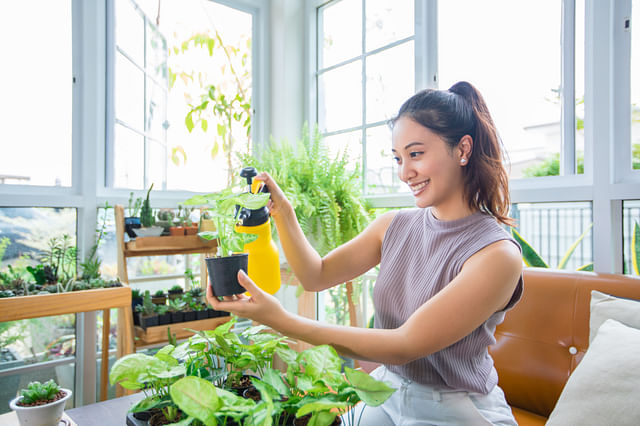
If you're like most people, you might think you have a black thumb. You can't seem to keep any plants alive for more than a week or two. But don't worry, you're not alone! A black thumb is also not something that you'll have forever, because, with some easy tips, you can become a green thumb.
In this plant care guide, I'll teach you all the basics about taking care of plants. We'll look at which plants are great for beginners and will allow you to make mistakes without dying right away.
Aside from the plants, we'll look at how (often) you should water your plants, how you choose a spot to put your plant, why and how often to fertilize your plant, and how you deal with pests. At the end of this guide, you'll know all the basics of taking care of houseplants and you'll soon realize you've become a green thumb!
These are the topics we're going to look at:
Let's get started with learning how to take care of houseplants, followed by some great beginner-friendly plants to practice your newly acquired skills!
Choose the right plants for your environment
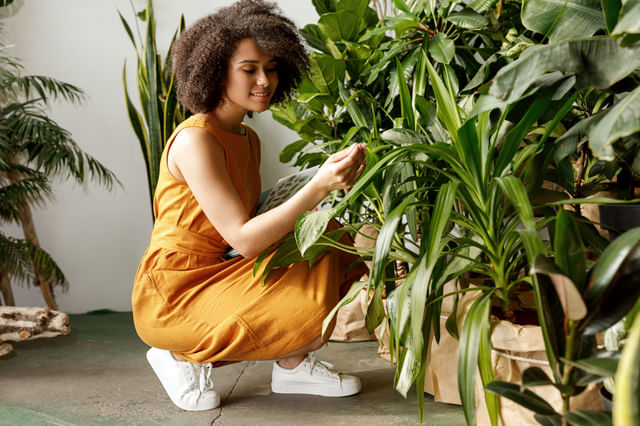
When choosing plants for your home or garden, it's important to think about the sunlight and temperature requirements of each of them. If you live in a region with long, hot summers, for example, you'll need to select plants that can tolerate higher temperatures and direct sunlight.
On the other hand, if you live in a cooler climate, you'll need to choose plants that can survive colder winters. This is only important if you plan to keep your plants outside. It's not as important for houseplants.
Your plant care habits
You should also consider your own care style when selecting plants. Are you someone who forgets about watering your plants? Perhaps a succulent or cactus is a great plant for you to start with. Do you love to water your plant a little more often? Perhaps African Violets or Peace Lilies are great plants for you to begin with. By taking these factors into account, you can make sure that you choose the right plants for your environment.
To determine a great plant for you to start with, let's answer these questions:
- Do you forget to water your plant? Choose a drought-tolerant plant
- Do you want to water your plant more often? Choose a moisture-loving plant
- Do you have large windows and a lot of natural sunlight in your house? Choose a plant that likes direct sunlight or bright indirect sunlight
- Do you have a house that sits in a shaded area or has very few windows? Choose a plant that prefers low-light spots
While you're answering these questions, keep track of the type of plant that would do best with your plant care style and your home. For example: "I need a drought-tolerant plant because I forget to water them all the time and the plant should prefer direct sunlight because my house has lots of natural sunlight". The type of plant will be important when we look at the best houseplant for you at the end of this guide, so write it down for now, and let's learn more about taking care of plants.
Give your plants the right amount of water
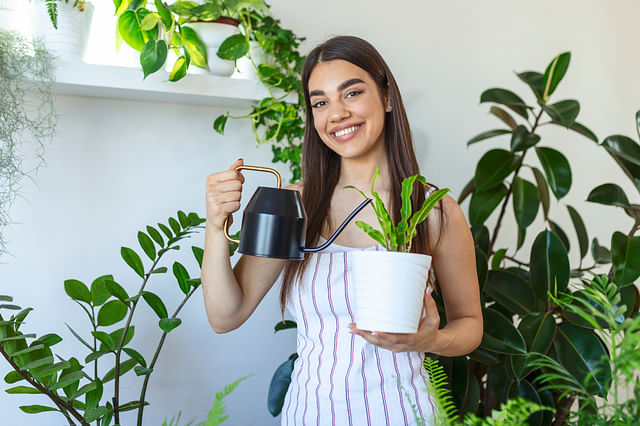
Watering and sunlight are two of the most important things to consider when it comes to keeping your plants healthy. Watering too much or too little can both have a big impact on your plants, as can letting them sit in direct sunlight for a longer time. By giving your plants the right amount of watering and sunlight, you can help them to thrive and stay healthy for longer.
If you'd like a trick to make watering your plant a lot easier: Always use a pot with one or more drainage holes. These drainage holes make it much easier for you to give your plant the right amount of water, without much risk of giving them too much.
Houseplants, in particular, are delicate creatures that need a bit of extra care and attention. Watering them once a week should be the most you'll have to water any plant, but be sure to check the soil before watering to make sure that it is not already moist.
How do you water your plants?
When you're watering your plants, especially when you're getting to know your plant for the first time, it's a great idea to bring it to a sink. Here's why!
When you're watering your plant, in a pot with a drainage hole, you can water it until the moisture starts to drip out of the bottom of the pot. Once the water starts to drip out of the bottom of the pot, the soil has absorbed all the moisture it can hold and is trying to get rid of any excess water. The soil is helping you to prevent overwatering your plant by getting rid of all the excess water out of the drainage hole.
I recommend watering your plant in the sink the first few times, rather than keeping it on the saucer under your pot because this is when you learn how much water the soil can absorb. After a few weeks of doing this, you'll have a pretty good understanding of how much water your plant needs and you can keep it on the saucer.
No plant likes to grow in wet soil, so proper drainage is essential for keeping your plant happy.
Give your plants the right amount of sunlight
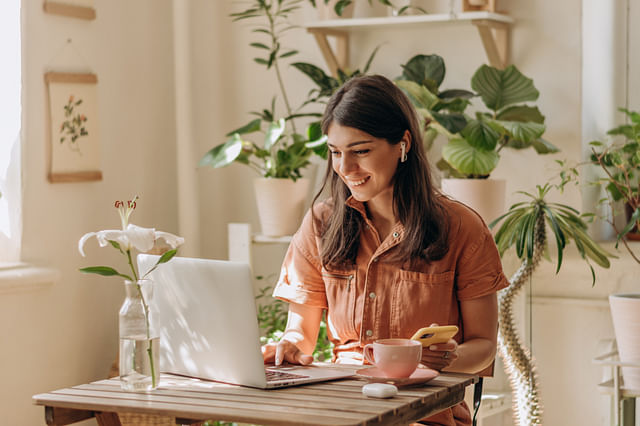
Sunlight is the second most important thing to keep your plant happy and healthy. Different plants like different levels of sunlight exposure, because they grow in different environments in nature.
Some plants, like cacti, grow in the full sun in warm and dry areas. While other plants, like a Monstera or Alocasia, grow under the shade of large trees, where they're only getting medium to bright indirect sunlight. Knowing where your plant grows and what type of sunlight it prefers is important for helping it grow and keeping it looking its best.
Luckily, most houseplants have very similar light needs, so if you haven't found anything about what type of light your plant prefers, you can give it bright indirect sunlight and it'll be happy.
Placing your houseplants near a window, not right next to it, is often ideal, as your plants will get plenty of indirect light without being exposed to harsh direct sunlight. Rotating your plants every so often will also help them to grow evenly. Learn more about rotating your houseplants.
How do you know your plant is getting too much sunlight?
Just like us, plants can get a bit too much sun and end up sunburned! One of the first signs that your plant is getting too much sunlight is if the leaves start to look scorched or have brown, crispy edges. You might also notice that the leaves are turning pale or yellow. This is a reaction to too much light where the plant is essentially getting "bleached." If you see these signs, it's a cue to move your plant to a spot that has less direct sunlight.
Another telltale sign of too much sun is if your plant begins to wilt, even when the soil is still moist. Overexposure to sunlight can cause the plant to lose water faster than it can take it up, leading to these sad, droopy leaves. If you spot these signs, it could also be root rot, so be sure to check your plant for this as well.
How do you know your plant is getting too little sunlight?
If your plant is not growing or it's getting very leggy and starts to lean to one side, it may be getting too little sunlight. Another sign that your plant is not getting enough light is if the leaves are turning pale green or yellow. Without enough sunlight, plants will not grow and may start to lose their color.
An easy fix is to move your plant to a brighter spot. You can trim any yellow leaves, but you can keep the pale leaves: these will turn back to their original color for most plants.
Give your houseplants a comfortable temperature
Now the easiest part of taking care of houseplants, which is to give your plants a spot with a constant, comfortable temperature. Houseplants love the same temperatures inside your home as you do, which makes them very easy to keep happy.
Houseplants like generallty like temperatures between 15 to 24 degrees Celsius (60 to 75 F). So temperature is easy, but there is one thing you should think about: consistent temperature.
It's important to avoid placing houseplants in places with "extreme" temperature changes or drafts. This means keeping them away from heating vents, air conditioning units, and drafty windows. Sudden temperature changes can stress plants.
Humidity also plays a big role in creating the right conditions for houseplants. Many indoor plants thrive in humidity levels of 40% to 60%. To maintain the right levels of humidity, you can use a humidifier, place plants on a tray filled with water and pebbles, or mist them regularly. Grouping plants together can also create a microenvironment that retains humidity.
You can find more information about maintaining humidity levels in this guide: What are the best humidity levels for houseplants?.
Fertilize your plants at the right time
Fertilizing your plants at the right time is critical to their growth. Plants need fertilizer to get the nutrients they need to grow. However, too much fertilizer can be just as harmful as not enough. The key is to find the right balance.
For most houseplants, that means fertilizer once a month during the growing season. However, there are some exceptions. For example, cacti and succulents need fertilizer only once or twice a year, while ferns and African violets benefit from fertilizer every two weeks. By fertilizing your plants at the right time, you can ensure that they get the nutrients they need to grow healthy and strong.
How often do you fertilize a plant?
There are no definitive answers as to how often you should fertilize your plant, but you can make a good guess.
If you have a slow-growing plant, meaning it barely grows larger in a year, you should generally only fertilize it twice per year: once at the beginning of spring and once at the beginning of the summer. These plants don't need a lot of nutrients, because they don't use a lot to grow bigger. Some examples of these types of plants are succulents, cacti, dracaena, and sansevieria.
If you have a medium-growing plant, meaning it will grow quite a bit per year, but they're not growing very many new leaves/stems per year, you'll need to fertilize your plant once per month in the spring and summer. Some types of plants like this are Monstera, Golden Pothos, Philodendron, and Syngonium.
Lastly, if you've got fast-growing plants, meaning they grow many new leaves and stems quickly, but those stems and leaves also die quite quickly, you'll need to fertilize your plant every 14 days. These plants have explosive growth during the spring and summer and might seem a little chaotic and "busy". Some types of plants like this are Spider plants, Ferns, Herbs, and Peace Lilies.
Prune your plants to keep them healthy and looking good
Pruning is an essential part of plant care. Not only does it help to keep plants looking their best, but it also helps to promote growth and control pests. However, many people don't realize that pruning houseplants are just as important as pruning outdoor plants. Houseplants often become leggy and wild-looking when they're not pruned, and they're also more likely to attract pests.
Pruning houseplants is a simple matter of removing any dead or damaged leaves, stems, or flowers. This will not only improve the plant's appearance but will also encourage new growth. In addition, regular pruning will help to keep pests under control. So don't forget to give your houseplants a good pruning now and then!
When you're ready to prune your plant, make sure to disinfect any tools you use to care for your plants. This will help you avoid spreading diseases from one plant to another.
Repot your plants when they start to get too big for their pot

Repotting your plants semi-regularly is important to keep it healthy for many years. When a plant starts to outgrow its pot, it's called being "rootbound". This means the roots have started to take up all the space in the pot and they're not able to get the air and water they need.
Repotting helps to ensure that your plants can continue growing healthy and strong. It also allows you to refresh the potting mix, which can help to prevent disease and pests. Not sure when it's time to repot? A general rule of thumb is to do it every 1-2 years for small plants, and every two to three years for large plants. So if you've been noticing that your beloved houseplant has been looking a little sad lately, and you've been doing everything right, it might be time to give it some extra growing space.
It's very important to pick a pot that's only one size larger than the previous pot. The biggest reason to pick a pot that's only slightly larger is that a pot that's too large for your plant will hold a lot more soil, which in turn will hold onto a lot more moisture. This could be too much moisture for your plant. This moist soil, that never dries out, is a magnet for pests and will cause root rot on your plant quite quickly. That's also why you should wait a year longer to repot larger plants because those pots are much larger than the previous pot and hold onto a lot more moisture as well.
Clean your plant's leaves regularly to prevent pests from growing
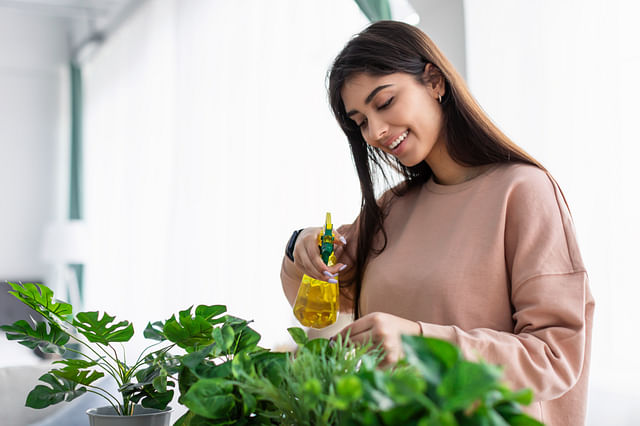
Any houseplant owner knows that keeping your plants healthy can be a bit of a challenge. In addition to making sure they get the right amount of sunlight and water, you also need to be on the lookout for pests. One way to help keep your plants healthy is to clean their leaves regularly.
The best and easiest way to protect your plant against pests is to prevent pests from getting to your plants. A great way to do this is to regularly clean your plant's leaves with neem oil, soap, and a warm water mixture. If you do this once per month, you're taking your time to inspect your plants for pests and you either prevent them from getting to your plant or you're actively removing them from your plant.
It's important to not clean the leaves too often, as this could also remove the good bacteria from your plant. The bacteria that are there to keep your plant healthy. I recommend you clean you plant's leaves a maximum of once per month, but ideally once every 2-3 months or so. Don't handle your plant too much.
Pests on your plants
Dealing with common pests like spider mites, aphids, and mealybugs on houseplants involves a mix of natural, mechanical, chemical, and home remedy methods.
First off, it's key to identify the pests correctly. Spider mites are tiny arachnids known for their webbing, aphids are small soft-bodied insects that cluster on new growth, and mealybugs look like white cottony masses in plant crevices.
For natural control, you can introduce beneficial insects like ladybugs and lacewings to your (indoor) garden, which naturally prey on these pests. Using a strong stream of water can also help dislodge and wash away the pests from your plants. Repeat this method several times over a few weeks to make sure the pests stay away.
Chemical control options include using insecticidal soap. Mix this soap with water and apply it to affected plants, focusing on areas where pests are most concentrated. Another effective solution is a mixture of rubbing alcohol and water (2 parts alcohol to 5 parts water), with a tablespoon of liquid dish soap, which can be sprayed directly onto the pests.
Home remedies are also handy. A soapy water solution made from liquid soap (not detergent) mixed with water (about 5% soap) can be sprayed onto plants, making sure to cover them thoroughly, including the undersides of leaves. For spider mites specifically, a few drops of Castile soap mixed in a squirt bottle filled with water can work wonders.
Regularly inspecting and cleaning the leaves of your plants is crucial for early detection of pest problems. If you find an infestation, isolate the affected plants to stop the spread to healthy ones. Combining these methods will help keep your houseplants free from spider mites, aphids, and mealybugs, ensuring they stay healthy and vibrant.
Common plant diseases to deal with
You might not want to think about plant diseases right now, but there could be a time where your plant runs into some problems. You'll need to know what's wrong and how to solve it.
Signs of plant diseases usually include things like yellowing or browning leaves and weird spots or patches. You might also notice wilting, stunted growth, or deformed leaves and stems. Fungal infections often show up as powdery mildew or black spots on the leaves. Plus, root rot can make a plant look generally unhealthy and may come with a bad smell.
To prevent these plant diseases, follow these guidelines:
- Give healthy plants enough space for good air circulation
- Use clean soil and pots to avoid bringing in any pathogens
- Water at the base of the plant to keep the leaves dry and don't overwater, as too much moisture can lead to fungal growth.
- Regularly check your plants for early signs of disease
- Get rid of any affected leaves or parts right away
- When pruning or propagating, make sure your tools are clean and disinfected
If you need to treat a disease, isolate the affected plants to stop the spread. Remove and discard any infected material. Use the right fungicides or bactericides if necessary, following the instructions on the label carefully.
Organic treatments like neem oil or a baking soda and water mix can also work against certain fungal diseases. Ensure your plants get enough light, nutrients, and care to boost their natural defenses. By combining prevention and timely treatment, you can keep plant diseases in check.
Change your plant care routine throughout the seasons
You might not have thought about changing your plant care routine during the different seasons, because it's not really cold in your house during the winter. But even if your plants are growing in your heated home, you'll need to adjust your care routine with the seasons. Let's see how!
Spring
In spring, houseplants usually start growing more actively. It's a great time to repot if needed, refresh their soil, and kick off a regular fertilizing routine to give them essential nutrients. You might need to water them more often since they're growing faster, but always check the soil first.
Summer
In summer, make sure houseplants are not exposed to direct, harsh sunlight that can cause leaf burn. Move them to spots with indirect light if needed. Because the temperatures are higher, you might need to water your plants a little more often. The soil will dry out more quickly, so regularly check the soil to see if your plant needs a bit of water.
Autumn
Autumn marks a time when houseplants start to slow down their growth. Gradually water them less often and stop fertilizing as they get ready for dormancy in the winter. Clean the leaves to get rid of dust and check for any pests that may have moved in during the warmer months.
Winter
In winter, houseplants usually go into a dormant phase with lower metabolic activity. Water them less to avoid root rot since they need less water when they're not growing much. Make sure they get enough natural light, maybe by moving them closer to windows.
Keep them away from heating vents or drafty windows to maintain a stable temperature. Also, boosting humidity can be important since indoor air gets drier because of heating systems.
What are some good plants to start with as a beginner?
We've looked at a few of the basics of taking care of plants and helping you become a green thumb. But reading about it is one thing, you'll need to practice your skills to get better at recognizing when your plants need water, perhaps they've had too much water and they need to dry out.
To help you practice your skills, I've picked 4 great plants for beginning plant owners, as they have clear needs and show you when they're not happy and something in their care needs to be changed. These plants also don't really suffer from any pests, so they won't overwhelm you with a lot going on at once.
If you remember from the beginning of the post, I've asked you 4 questions to determine what type of plant fits you and your living space best. Let's now match your plant care style and living space to the perfect plant to start with!
Sansevieria
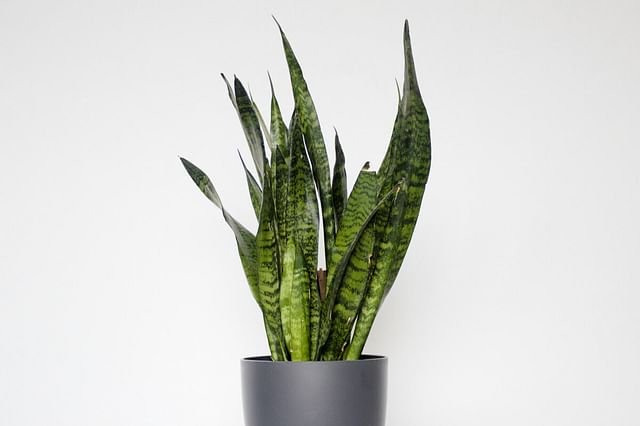
A Sansevieria is perfect for you and your space if you forget to water your plants all the time or if you don't want to spend too much time taking care of your plants. The Sansevieria grows well in all light levels, from low light spots to direct sunlight, so it's a very versatile plant.
Characteristics
- Sunlight: Anything, from low light to direct sunlight
- Water: Ideally, once every 14 days
- Fertilizer: Once per month in the spring and summer
Read more about taking care of a Sansevieria.
Succulent / Cactus
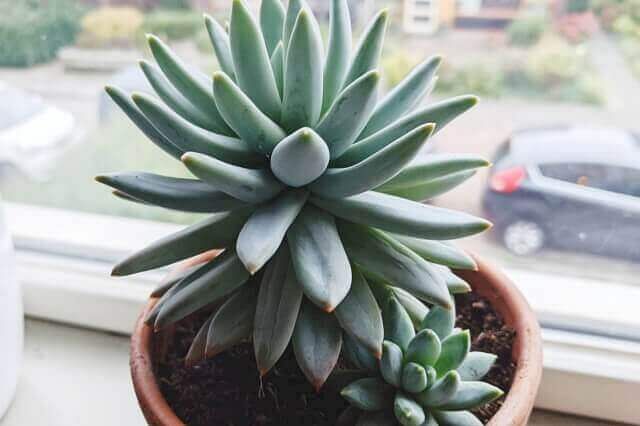
A Succulent or Cactus is perfect for you and your space if you forget to water your plants all the time or if you don't want to spend too much time taking care of your plants. Succulents and cacti grow well in direct sunlight, on a windowsill where they get sunlight for a few hours per day in the afternoon.
Characteristics
- Sunlight: Direct sunlight
- Water: Ideally, once every 14 days
- Fertilizer: Once at the beginning of spring and once at the beginning of summer
Read more about taking care of a Succulent.
Peace Lily
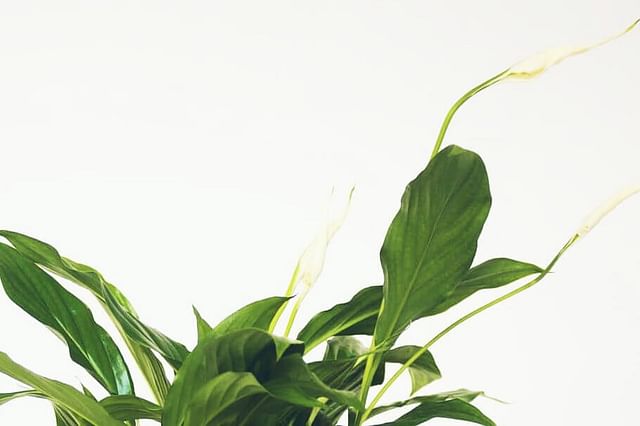
A Peace Lily is a flowering houseplant that loves moisture and is perfect for you and your space if you like to water your plants a little every few days. The Peace Lily grows well in low light spots up to medium bright indirect light spots. If you want it to grow its beautiful flowers, you'll need to put it in a spot that has at least medium indirect sunlight, because it'll need the energy from the sunlight to grow.
Characteristics
- Sunlight: Low light to bright indirect sunlight
- Water: Ideally, once per week
- Fertilizer: Once every 14 days in the spring and summer
Read more about taking care of a Peace Lily.
African Violets
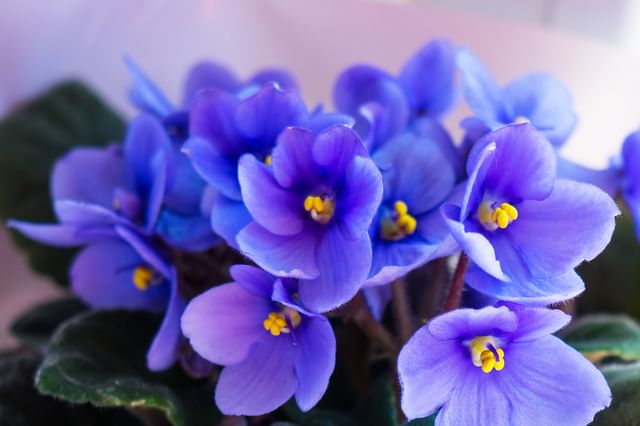
African Violets, a beautiful flower that thrives in sunlight and loves moisture! It's perfect for you and your space if you like to water your plants a little more often. The African Violets grow best in bright indirect to direct sunlight and like to be fertilized frequently.
Characteristics
- Sunlight: Bright indirect to direct sunlight
- Water: Ideally, once every 4 days
- Fertilizer: Once every 14 days in the spring and summer
Read more about taking care of an African violet.
Conclusion
You should now have a few great beginner-friendly plants to start your plant journey with. These plants are quite forgiving and allow you to make mistakes without killing them right away. These plants should help you to recognize if they need water or if they've had too much. As soon as you can help these plants thrive, you're ready to take on more difficult plants and see what they want and need in your house!
By following these simple tips, you will be on your way to becoming a successful plant parent in no time! Be sure to share this guide with your friends and family so that they can become green thumbs too.
Thank you for reading this post! I hope it helps you to keep your plants healthy and beautiful! If you're looking for more guides on specific plants, you can always request a plant guide to get a guide for the plant you have trouble with.
Test your plant care knowledge
Quiz completed!
Want to learn more? Sign up for my newsletter to receive free tips in your inbox!
Sign up now!